Cold calling allows direct connections with prospects and potential buyers over the phone, making them aware or interested in the solution you’re selling. This prospecting method enables sales reps to target a list of contacts in a short time while getting immediate responses from leads to move them to the next stage of the sales process. We’ve compiled 34 cold calling statistics to help you understand its elements and effectiveness.
Driving Factors to Success of Cold Call Statistics
Placing a cold call has two objectives: first, to make contact with a lead, and second, to move that lead forward in the sales process. These cold call statistics show how the small details that go into this sales activity often lead to better connection and cold calling success rates.
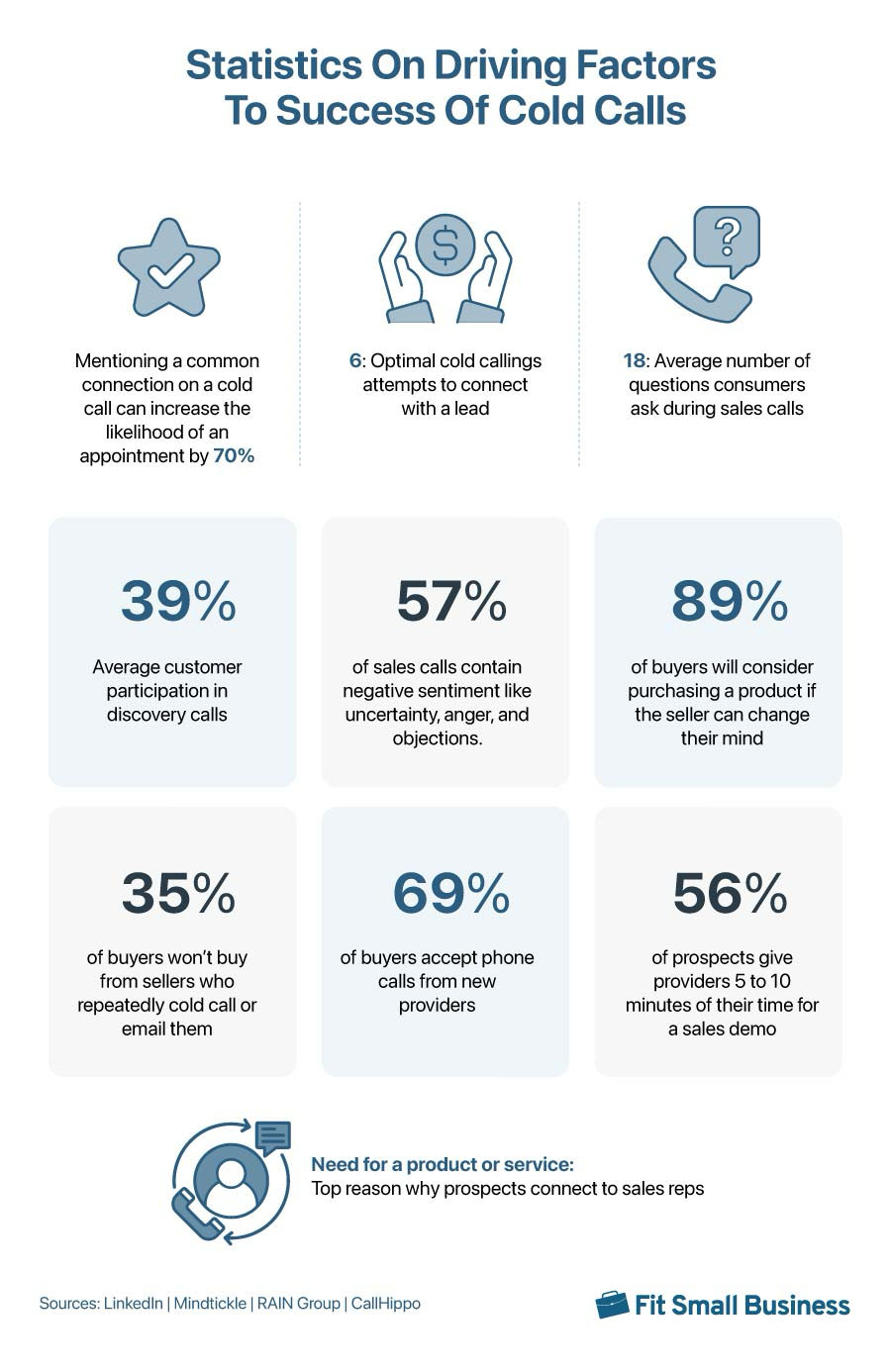
1. Mentioning a common connection on a cold call can increase the likelihood of an appointment by 70%.
Takeaway: It’s not surprising that citing a mutual connection can yield a stronger cold calling conversion rate. What is surprising, however, is how much of an impact it has. During prospect research and before placing a call to a decision-maker, checking out their LinkedIn profile to see if any of your family, friends, or professional colleagues know the person can have a huge impact on whether or not you get that appointment.
(Source: LinkedIn)
Pro tip: The TeamLink feature in LinkedIn Sales Navigator is a powerful prospecting tool that lets you see a list of your connections who are also connected with a prospect you’re targeting. From the mutual connection list, you can make an introduction to a potential lead in just one click and give yourself a better chance of converting. Download our business introduction templates and customize them according to your specific use case.
Visit LinkedIn Sales Navigator
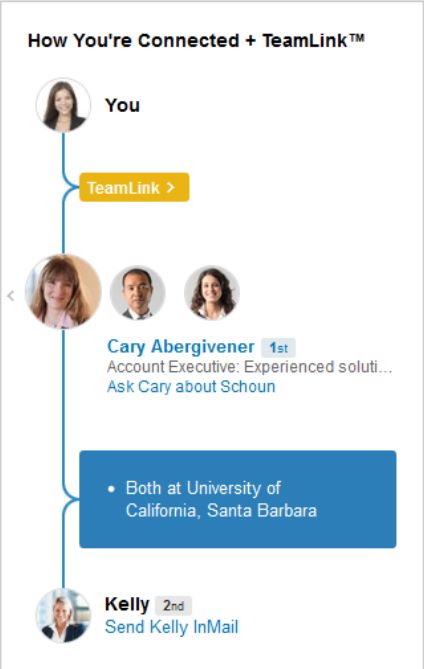
LinkedIn TeamLink (Source: LinkedIn)
2. Consumers now ask an average of 18 questions during sales calls, up from 13 in 2022.
Takeaway: Buyers nowadays are making more informed decisions, as evidenced by the increased scrutiny of their purchases. With that in mind, sales reps ought to strengthen their product knowledge so that they can provide relevant answers to customers’ questions. Creating a sales playbook is an effective way to outline your company’s sales processes and goals.
(Source: Mindtickle)
3. On average, customer participation in discovery calls is 39%, down from 51% last year.
Takeaway: This data indicates that agents now have more talk time than customers during sales calls. In comparison, customer participation in calls handled by top agents is 57%. To help increase this number, reps should learn to ask questions that prompt prospects to think and give long-form answers instead of mere yes-no questions. For example, opt to ask the customer about product improvements they would like to see rather than just asking if they like the product.
(Source: Mindtickle)
4. The majority (57%) of sales calls contain negative sentiments like uncertainty, anger & objections.
Takeaway: In light of the forecasted recession from late 2023 to early 2024, expect to meet a lot of resistance from prospects during cold calls. For sales leaders, part of the key aspects of sales management is training your reps on how to handle rejections and respond with empathy to frustrated customers.
(Source: Mindtickle)
5. Most (89%) buyers are likely to consider purchasing a product if the seller can change their mind.
Takeaway: Most buyers would buy a product if a seller is skillful enough to convince them to do so. In addition, 54% of buyers admitted that it is often possible for a seller to steer them into a new mindset or assumption about a product or service. Having said that, sellers should not be afraid to question a buyer’s way of thinking because doing so could help them close a deal.
(Source: LinkedIn)
6. About a third (35%) of buyers won’t buy from sellers who repeatedly cold call or email them.
Takeaway: This survey tells us which seller behavior turns off buyers, one of which is overusing the cold outreach. That said, do your best to deliver personalized messaging to prospects to help increase your chances of closing a deal. The same study also highlights the importance of active listening, where you listen to the prospect more than you speak to find out what they truly need.
(Source: LinkedIn)
7. The majority (69%) of buyers accept phone calls from companies they haven’t worked with before.
Takeaway: Given the large percentage of consumers who accept cold calls, we can say that this type of outreach is worth the effort. When it comes to cold email outreach, this study has found that 77% of prospects respond positively. Be diligent in reaching out to those prospects and your efforts will be rewarded.
(Source: RAIN Group)
8. Over half (56%) of prospects give providers 5 to 10 minutes of their time for a sales demo or presentation.
Takeaway: Less than a third (22%) of prospects allow reps to talk about their product or service for five minutes, and an equal percentage give providers more than 10 minutes for a demo. Regardless, we know that 56% allow reps to conduct a demo so that they can gauge the value of that provider to them. That said, reps should always be prepared to highlight the features and benefits of their products and services most relevant to their prospect’s needs.
(Source: RAIN Group)
Pro tip: Follow our step-by-step guide on how to give product demos that sell. This article also includes script examples and templates that you can download and customize for your own business.
9. The need for a product or service is the top reason why prospects connect to sales reps who reach out to them.
Takeaway: The top reasons why consumers accept sales calls are the need for a product (79%), budget (64%), and product value (63%). Capitalize on these factors by educating prospects about the benefits of the product or service you are offering. At times, they might not have an allotted budget for your product, but they will decide to invest if you can help them appreciate the results that your product can bring.
(Source: RAIN Group)
10. Six is the optimal number of cold calling attempts to have the best chance of connecting with a lead.
Takeaway: Much of your time placing cold calls will be spent leaving a voicemail due to a non-answer. Based on this study, you only have around a 35% to 40% chance of getting an answer on the first attempt. This stat shows how important persistence is when attempting to connect with someone.
(Source: CallHippo)
11. Doing five additional cold call attempts increases your chances of conversion by 70%.
Takeaway: Converting prospects takes more than just making cold calls during the perfect time. It also needs a dash of persistence on the part of the rep. Given that 40% of agents do not follow up on a lead after the initial call, there are many prospects who could have been converted with just a little more push.
(Source: CallHippo)
Pro tip: Once you’ve crafted the perfect cold calling script that highlights your value proposition, use a customer relationship manager (CRM) to store it for all reps to access. Popular products like Salesforce have organizational file management features to store and share documents, slide decks, and spreadsheets for everyone using the CRM system.
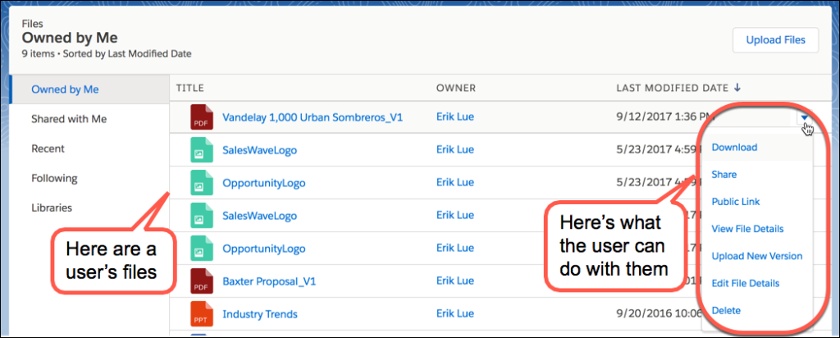
Salesforce file management system (Source: Salesforce)
Cold Calling Statistics on Cadence & Timing
Which leads should you contact first? How many cold calls a day should you make? These are just a couple of the questions sales reps often ask themselves after entering leads into their pipeline. Below are several statistics about cold calling cadence to consider when implementing your cold calling lead generation and sales processes.
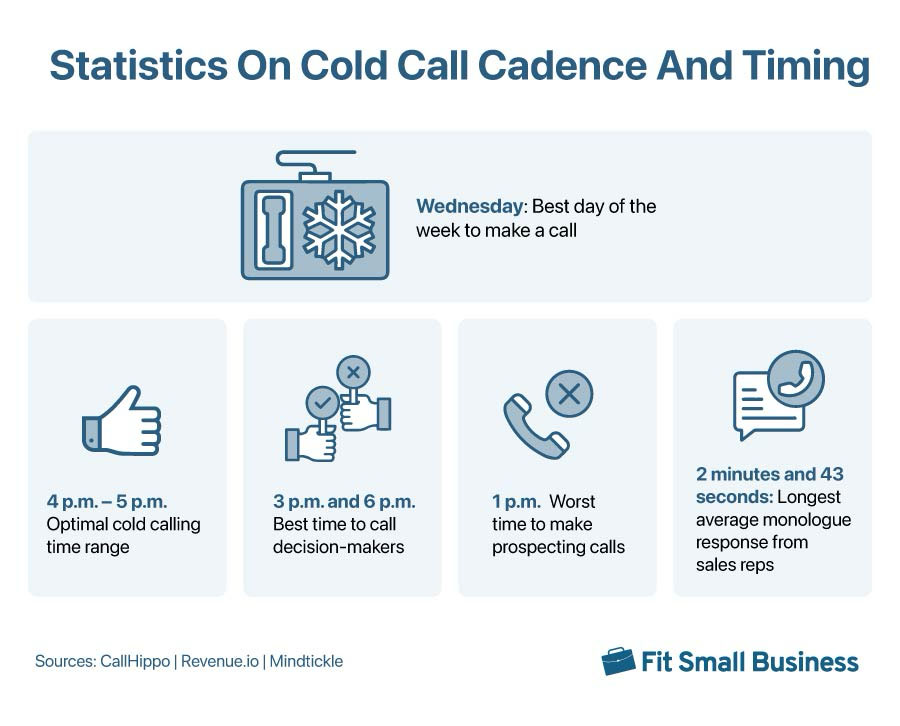
12. Making cold calls on Wednesdays is 50% more effective than making calls on Mondays.
Takeaway: Wednesday is considered the best day to make cold calls in terms of a lead answering the phone. Generally speaking, Wednesdays are when employees are deeply focused on their work and likely to be at their workstation—making them more accessible than, say, Mondays or Fridays. Try making it a sales management practice to use Wednesday as the prime day for reps to place calls.
(Source: CallHippo)
Pro tip: To optimize your high-volume calling days, use software with dialing automation connected to your customer relationship management (CRM) system. Freshdesk, for example, is software native to Freshsales and has a power dialing module with a built-in telephone. This feature dials the phone for you based on a preset list of contacts so you can make many calls in a row without taking too much time manually typing phone numbers.
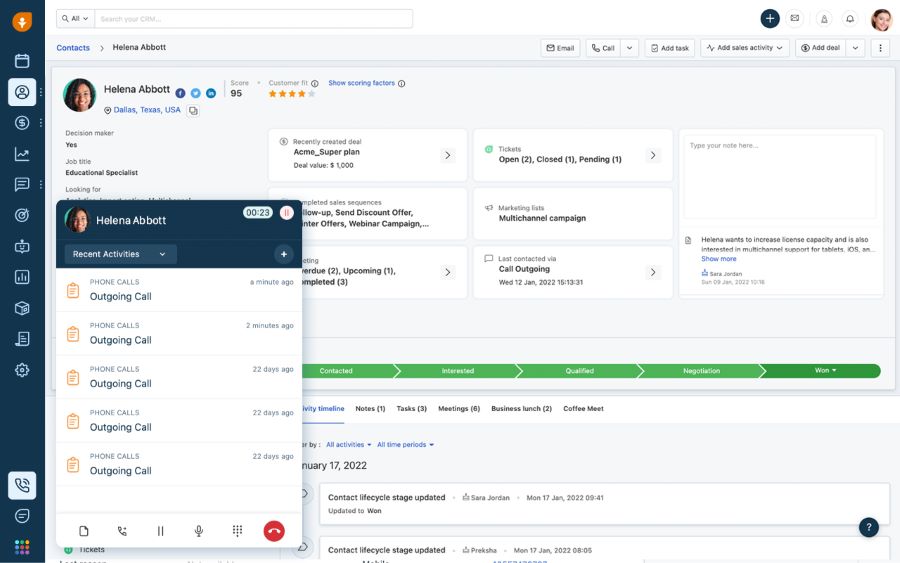
Freshsales built-in cloud telephony (Source: Freshsales)
13. The optimal cold calling time range is from 4 p.m. to 5 p.m.
Takeaway: Both the 4 p.m. to 5 p.m. and 11 a.m. to 12 p.m. time slots are the two best hours to place calls based on success in connecting with a prospect on the first attempt. During these time frames, most businesses are out for a break and have extra time to spare. However, the 4 p.m. to 5 p.m. slot still produces 71% better results than that early afternoon time frame.
(Source: CallHippo)
Pro tip: A CRM with task management features can help remind you to make your calls during these high cold call success rate time frames. Pipedrive, for instance, has task management capabilities that let you add one-time or recurring tasks for a specific time and day each week. These tasks can be created as general tasks or ones specifically associated with a lead, deal, or account record.
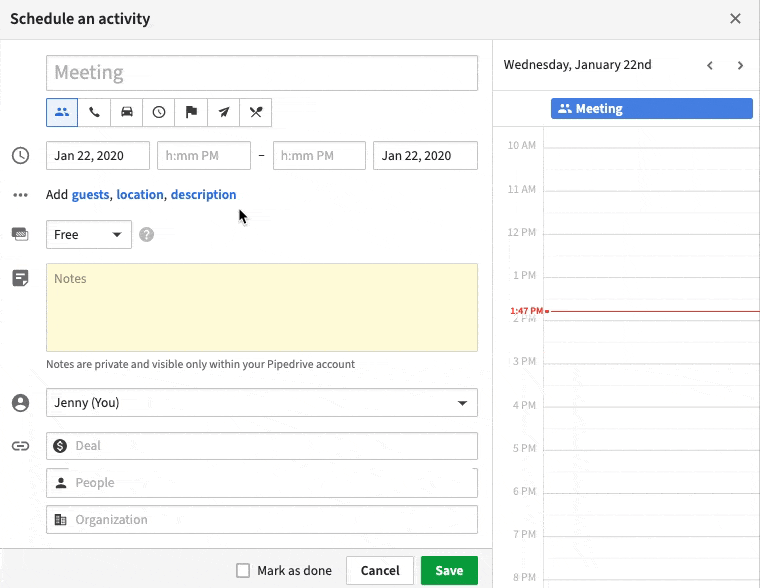
Scheduling a task or activity on Pipedrive (Source: Pipedrive)
14. The best time to call decision-makers is between 3 p.m. & 6 p.m.
Takeaway: Decision-makers tend to engage more with sellers in the late afternoon. The peak engagement happens from 4 p.m. to 5 p.m., followed by 3 p.m. to 4 p.m., then 5 p.m. to 6 p.m. Based on this data, sales teams ought to schedule cold calls with top targets from 3 p.m. to 6 p.m. in their own time zone.
(Source: Revenue.io)
15. The worst time to make prospecting calls is around 1 p.m.
Takeaway: As every sales territory’s working hours vary, it is best to make prospecting calls whenever your target is picking up the phone. The peak connection time is around 9 a.m., steadily fluctuating every hour throughout the day and going down significantly from 4 p.m. onward. It is not advisable to call prospects outside of their working hours and during their personal time when they are spending time eating out or taking a break.
(Source: Revenue.io)
16. Long monologue responses from sales reps last an average of 2 minutes, 43 seconds.
Takeaway: Long monologues happen when a sales rep is trying to go through a lot of content on a slide presentation or gives a nervous response to a question that they were not prepared for. Reps should avoid monopolizing the conversation so that they don’t compromise customer engagement. Remember that customers who are engaged are the ones who are most likely to make a purchase.
(Source: Mindtickle)
Voice Call Usage & Popularity of Cold Calling Stats
While cold calling is considered more traditional than some of today’s sales outreach methods, such as emailing or social media messaging, many businesses still use it as their primary prospecting channel. These cold call statistics tell you just how common this prospecting method is today within sales teams and how sales reps truly feel about doing this sales activity.
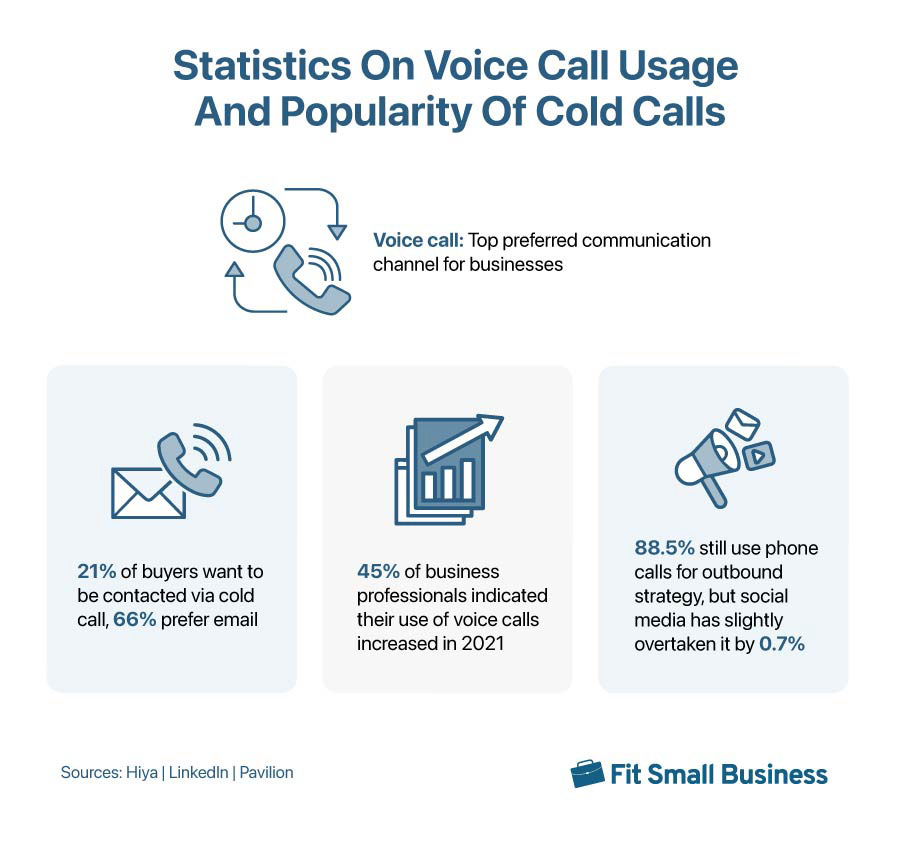
17. Voice call is the top preferred communication channel for businesses for most customer interactions.
Takeaway: Phone calls have remained the most preferred method of communication for interactions that include resolving issues, closing cold call sales, and setting appointments. This channel is considered immediate and convenient, yet it also has a personal touch and is not intrusive.
(Source: Hiya)
18. Only 21% of buyers want to be contacted via cold call & 66% prefer email as an outreach method.
Takeaway: Email is the most preferred method of outreach by buyers, with cold calls lagging far behind at 21%. Email is followed by in-person events (35%), social media (34%), virtual events (31%), and email newsletters (30%). This does not mean cold calling is ineffective, since a fifth of buyers still prefer it. However, it is worth noting that 37% more sellers are now adopting warm calling methods.
(Source: LinkedIn)
19. Almost half (45%) of business professionals indicated their use of voice calls increased in 2021.
Takeaway: Based on Hiya’s data, both businesses and consumers spent an average of 98 minutes per month on voice calls in 2021––that’s an average of 58 incoming and 59 outgoing calls per month. With voice calls being the top preferred mode of communication, this trend will most likely continue.
(Source: Hiya)
Pro tip: CRMs offer excellent reporting tools for managers to track sales activity, such as phone calls placed as well as total production for revenue and deals generated. HubSpot CRM, in particular, has easy-to-use features to create reports according to the type of data the user would like to see and how they want it organized, such as by rep, team, or regional department.
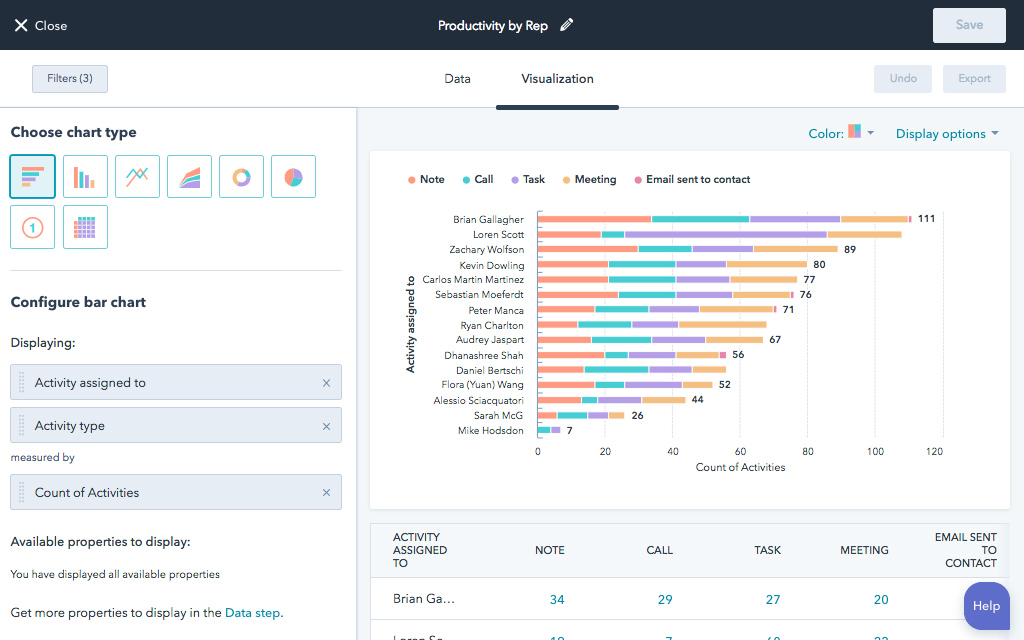
HubSpot CRM productivity dashboard (Source: HubSpot)
20. The majority (88.5%) still use phone calls for outbound strategy, but social media has slightly overtaken it by 0.7%.
Takeaway: According to this survey, email is the top channel (97.7%) that sales development representatives (SDRs) use for outbound strategy. While phone calls remain in the third spot, social media (89.2%) is quickly rising in popularity and has already overtaken it. This means that small businesses have to adjust to the trend instead of just limiting their outreach to a single channel.
(Source: Pavilion)
Spam & Fraud Cold Calling Stats
Phone scams and fraud calls have been around for many decades and continue to affect both businesses and consumers globally. The cold call statistics below tell us how the prevalence of scam calls hinders legitimate business calls from going through and what businesses can do to ensure their cold calls are not being marked as spam.
21. 94% of consumers said they think calls from unknown numbers might be fraudulent.
Takeaway: A staggering majority of consumers may never pick up the phone if they receive unidentified calls, posing a giant obstacle for businesses that engage in cold calls. To overcome this problem, businesses could brand their calls to ease consumers’ fear of receiving fraudulent calls.
(Source: Hiya)
22. Over half (62%) of consumers have received impersonation calls & 12% have stopped doing business with the impersonated company.
Takeaway: Legitimate businesses are negatively affected by scammers who impersonate them in phone calls. In fact, 32% of consumers are now suspicious of calls from impersonated companies, and 20% have lost trust in these businesses. In addition, 20% now have tainted views of the spoofed business, while 12% have ultimately switched brands due to these impersonation calls.
(Source: Hiya)
23. 38% of businesses do not know that their calls are being marked as spam, while 32% know this is happening.
Takeaway: One of the biggest challenges for businesses that engage in cold calling services is the lack of knowledge on whether their calls are being labeled as spam or not. While others are aware that this is happening, more than a third still do not know if scammers are hijacking their business numbers.
(Source: Hiya)
24. 32% of businesses believe branded calls are the most effective way to increase answer rates & 97% are willing to pay extra for it.
Takeaway: Business professionals believe adding identity to outbound calls is the best solution to scam calls. Almost all respondents in the survey said they are willing to pay a premium per call for a branded caller ID solution. Other solutions cited include ensuring calls don’t have a spam label, increasing agent coaching, and adjusting call scripts and interactive voice responses (IVRs).
(Source: Hiya)
Pro tip: Freshsales integrates natively with Freshdesk Contact Center, customer support software within Freshworks’ ecosystem of apps. This integration allows you to use an outbound caller ID that allows your customers to easily identify your company, no matter which number your agents are using for the call.
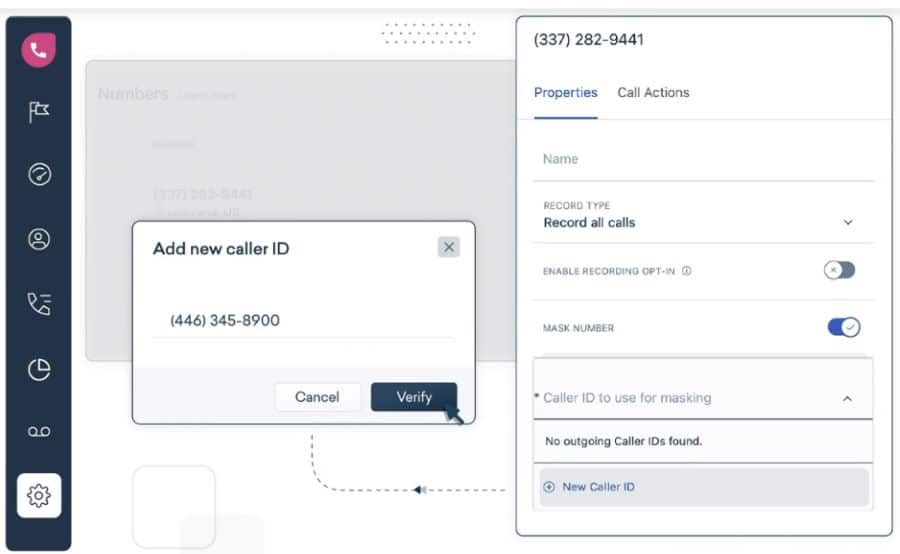
Freshdesk Contact Center’s outbound caller ID (Source: Freshdesk)
Cold Calling Statistics on Salespeople & Performance Metrics
The phone remains one of the most successful sales channels right now, both in general selling and in remote sales. Read on to learn important cold calling metrics, as well as cold calling statistics that touch on reps’ performance and top focus. Use this data as benchmarks for your own team’s sales performance and productivity.
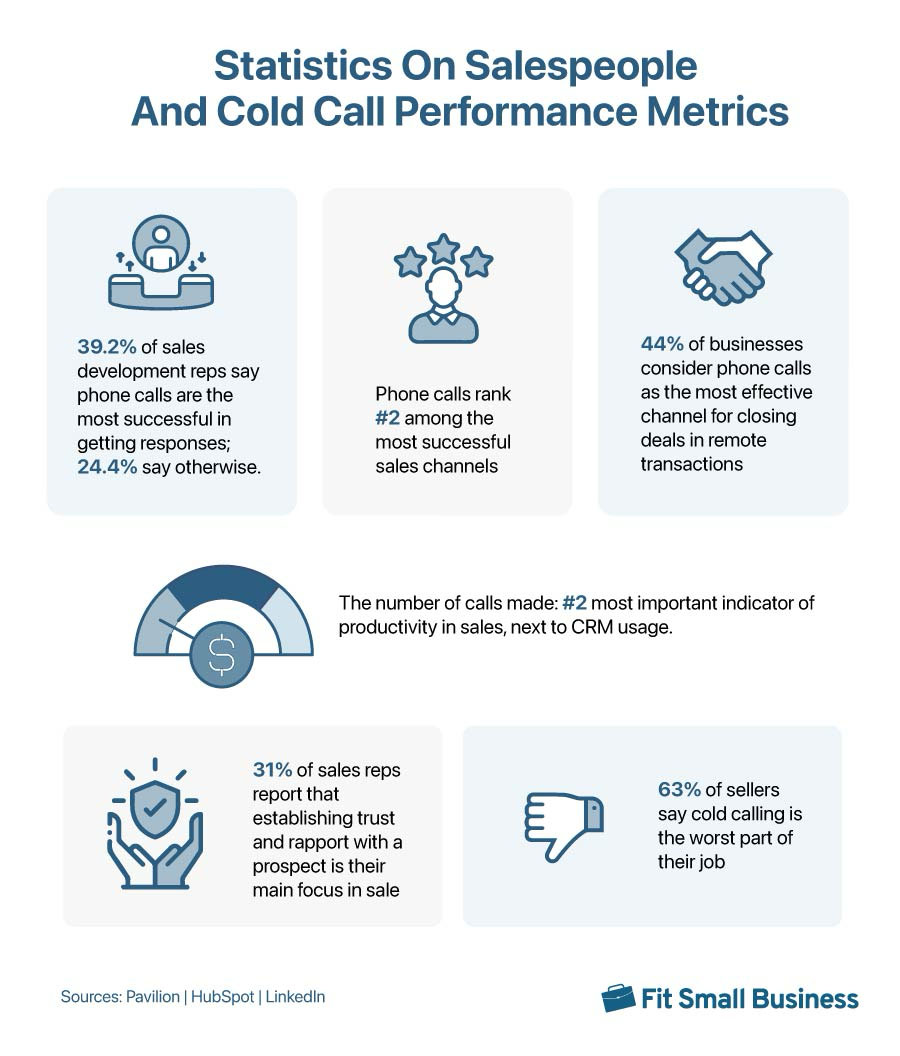
25. 39.2% of sales development reps say phone calls are the most successful in getting responses, while 24.4% say otherwise.
Takeaway: There is still an ongoing debate on which outbound channel is the most effective in getting responses, and this stat solidifies the ranking of phone calls among all the channels. Almost a fifth of high-quality leads are generated through sales activities such as this. In fact, this type of outreach is part of the steps involved in generating sales leads.
(Source: Pavilion)
Pro tip: Keep your sales team motivated to make their calls by gamifying your sales operation. Using various competitions with rewards and incentives goes a long way toward producing solid results and maintaining a positive culture. Check out some of our ideas in our article on sales contests to motivate your team.
26. Phone calls rank #2 among the most successful sales channels, next to in-person meetings.
Takeaway: Making phone calls is among the five most effective sales channels, ranking below in-person meetings and just above social media and email. A modern business phone enables reps to sell wherever they are.
(Source: HubSpot)
27. 44% of businesses consider phone calls the most effective channel for closing deals in remote transactions.
Takeaway: When it comes to remote selling, most businesses believe that using a modern business phone is the best way to sell. This is followed by email (21%) and video chats (18%). Through voice calls, you can easily build rapport with prospects and create a positive customer experience they easily recall.
(Source: HubSpot)
Pro tip: Leverage HubSpot CRM’s cloud-based phone features like international and local numbers to expand your global reach and speak to prospects wherever they are. Doing this also lets you see major cost savings on international calling.
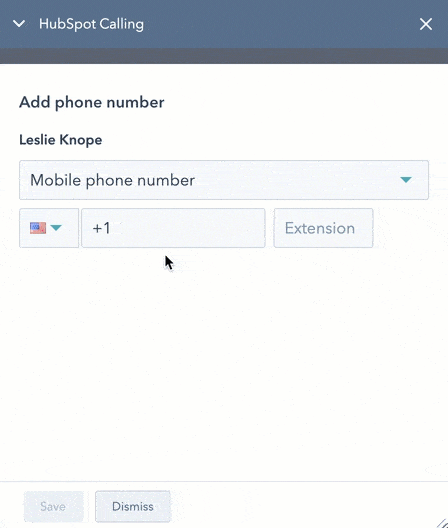
Adding a phone number on HubSpot CRM’s caller (Source: HubSpot)
28. The number of calls made is the second most important indicator of productivity in sales, next to CRM usage.
Takeaway: Almost half (47%) of sales managers rank CRM usage as the most important metric for sales rep productivity, followed by the number of calls made (41%). Next in line are the emails sent (37%), cold call conversation rate (36%), use of sales enablement tools (35%), proposals sent (33%), number of follow-ups (31%), and scheduled meetings (30%). This shows how crucial calls are to a sales team’s overall progress and productivity.
(Source: HubSpot)
29. 31% of sales reps report that establishing trust & rapport with a prospect has become the main focus in sales.
Takeaway: Compared to 2021, there was more demand for establishing trust and rapport with prospects in 2022. Other top changes in the sales field since then include an added focus on solution-based pitches (27%) and more personalization when trying to close deals (27%). Aside from that, they focused on upselling and cross-selling for existing customers rather than finding new ones.
(Source: HubSpot)
30. 63% of sellers say cold calling is the worst part of their job.
Takeaway: While it’s essential in many sales roles, most reps do not enjoy doing this activity compared to other parts of their job, such as networking, generating proposals, or even data entry in a CRM. The task as a whole can be intimidating at times (especially for newer sales reps) as you’re making calls to total strangers, knowing they will be caught off guard, annoyed, and may likely reject your proposition.
(Source: LinkedIn)
Impact of Remote Work on Cold Calling
The COVID-19 pandemic has propelled the popularity of remote work. While the world has already shifted back to face-to-face meetings and adapted hybrid work settings, the rise of remote work has also impacted cold calls. Check out the stats below to learn more about what percentage of sellers still conduct cold calls, the impact of remote work on the buying process, and how many sellers want to keep working remotely.
31. 88% of sellers engage in warm calls & only 46% conduct cold calls.
Takeaway: The COVID-19 pandemic has permanently and positively disrupted the selling landscape. Virtual selling is now flourishing, with sellers interacting with buyers via phone calls, video calls, social media, email, and chat. However, warm calls still prevail over cold calls. When someone answers your cold call, make sure you are prepared with a solution-focused approach so as not to waste your prospect’s time.
(Source: LinkedIn)
32. One in five (21%) salespeople find remote selling more difficult than the traditional way, while 36% find it easier to sell virtually.
Takeaway: It could be easier for many sales reps to sell remotely because all the information they need about leads and prospects is already in front of them, automatically pulled online by their CRM system. Others feel more comfortable and confident because they are working from their own homes. However, 46% of hybrid sales reps feel that virtual selling is less effective.
(Source: HubSpot)
33. More than half (55%) of buyers say working remotely has made the buying process significantly easier.
Takeaway: When asked about the impact of remote work on their purchasing decisions, 55% of the respondents said it made the buying process easier. More than a third (36%) said there is no change at all, and 9% said working remotely has made buying more difficult.
(Source: LinkedIn)
34. More than half (52%) of sellers want to work remotely 50% of the time.
Takeaway: The desire to work remotely is shared by both buyers and sellers. Based on LinkedIn data, the number of remote sales job postings increased by almost 300% in the U.S. and Canada from December 2021 to February 2022. This further proves remote selling is thriving and is here to stay.
(Source: LinkedIn)
Frequently Asked Questions (FAQs)
Yes, based on the statistics above, cold calling really works. This sales activity allows businesses to connect directly to a wide audience, including potential customers that they may miss when they use other channels like email and social media. This type of outreach gives you an opportunity to personalize buyer engagement and collect important feedback on buyers’ needs and questions.
There are several reasons why cold calls fail. These include not making enough calls to increase your chance of success, having a weak value proposition, and giving up on the first objection. Some prospects could back out of a call if you ask them for too much time or if you can’t address their concerns and questions.
An effective cold call is one that is made by a sales rep who orchestrates a personalized interaction based on pre-call research about what the prospect wants and needs. It is important to connect with prospects who are receptive to your product or service. In addition, the agent should be able to build rapport with the prospect and lead them into an engaging conversation.
Bottom Line
Cold calling today remains popular and effective, assuming best practices are followed. While you might see stories online or posts on LinkedIn either crediting or discrediting this sales method, these business-to-business (B2B) cold calling statistics take real data from businesses to tell the true story of their experiences. Incorporate cold calling strategies into your sales process and follow our sales team training tips on how to place effective cold calls to prospects.